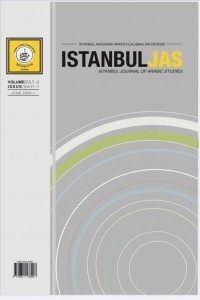Aḥmed el-Ġarḳāvî’nin “Vechu S̱ubûti’l-Vâv fî Ḳavlihî Teâlâ: Ve Futiḥat Ebvâbuhâ” Adlı Risâlesinin Tahkiki
Osmanlı Devleti’nin Mısır’daki dönemin müftüsü, Maliki mezhebinin önde gelen âlimlerinden Aḥmed el-Ġarḳāvî’nin cennetten bahseden Zümer sûresinin 73. ayetinde vav harfinin zikredildiği, ancak aynı sûrenin cehennemden bahseden 71. ayetinde ise zikredilmediği hususunda dikkatini çekmiş ve bu konuyu ele alıp bir risale yazmasını istemiştir. Bu talep üzerine el-Ġarḳāvî, yukarıda adı geçen ayetlerin değişik müfessirlerin görüşlerine başvurarak tefsirini yapmaya çalışmış, konuyla ilgili Basra ve Kûfeli dilcilerin görüşlerine yer vermiştir. el-Ġarḳāvî, gerek müfessirlerin gerekse dilcilerin konuyla ilgili yer vermiş olduğu bazı görüşlerine katılmış, bazılarını da mantıksal ve dini delilleri ortaya koyarak çürütmüştür. Arap dili, belagatı ve sanatı, Kuran icâzı ve tefsiri açısından önemli bir araştırma konusu olan bu risale, her iki ayette bulunan ince üslubu ve nükteyi ortaya koyan değerli bir çalışmadır.
Anahtar Kelimeler:
Arap Dili, Abdulbâkī Efendi, Aḥmed el-Ġarḳāvî, Osmanlı, Tefsir
Investigation of the Epistle of Ahmad al-Gharqāwī Regarding the Proof of the Waw Letter in the Verses of the Quran
The Grand Mufti of the Ottoman Empire in Egypt at that period of time, pointed out that the letter waw was used in the 73th verse of the Surah al-Zumar mentioning the heaven but not used in the 71st verse mentioning the hell. He then requested from Ahmad al-Gharqāwī, who was the most prominent scholar of the Maliki sect, to write an epistle about the subject. Upon this request, al-Gharqāwī tried to interpret the verses mentioned above by referring to the opinions of different commentators. He included the opinions of linguists from Basra and Kufa. He participated in some of the opinions of both the commentators and the linguists on the subject, and refuted some of them by revealing the logical and religious evidence. An important research subject in terms of Arabic language, the art of rhetoric, Quranic performance and interpretation, this epistle is a valuable study that reveals the subtle style and nucleus found in both verses.
Keywords:
Ottoman, Ahmad al-Gharqāwī, Arabic Language, Tafsir, Abdulbākī Effendi,
___
- Ahmed Se‘alebî, el-Keşf ve’l-Beyân, Tah. Ebu Muhammed ‘Âşûr, Beyrut: İhyau’t-Turâsi’l-‘Arabî, 1422.
- Ahmed el-Hafâci, ‘İnâyetu’l-Kâdi ve Kifâyatu’l-Râdi ‘ala Tefsîr el-Beyzavî, Beyrut: Dâru Sâdır, 1978.
- Ahmed es-Sebkî, ‘Urusu’l-Efrâh, Tah. ‘Abdulhamîd Hendâvî, Beyrut, el-Meketebetu’l-‘Asriyye, 1423.
- Ahmed Teymur Bâşa, Fihrisu’l- Hazeneti’t-Teymuriyye, Kahire: el-Meketebetu’l-Mısrıyye, 1948.
- ISSN: 2651-5385
- Yayın Aralığı: Yılda 2 Sayı
- Başlangıç: 2018
- Yayıncı: İbrahim ŞABAN
Sayıdaki Diğer Makaleler
Nefret Söylemi: Zorluklar ve Yüzleşme Yolları
